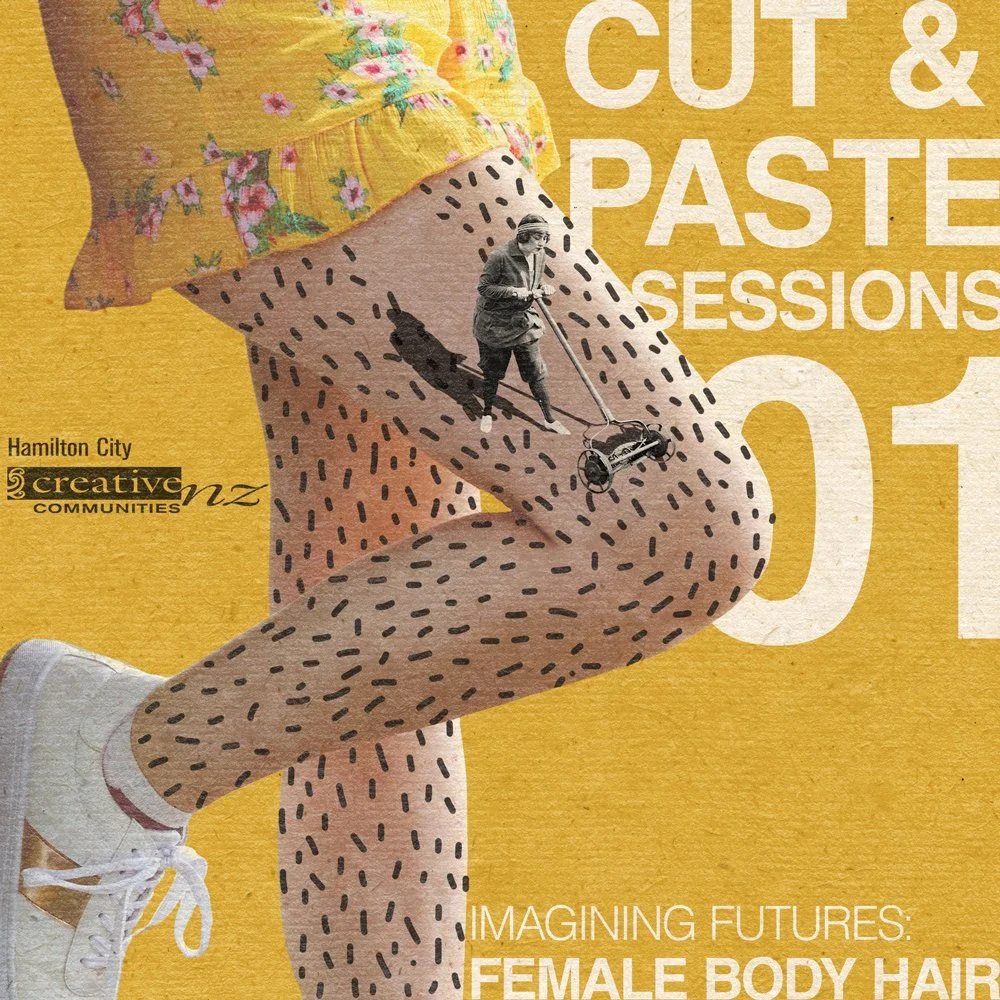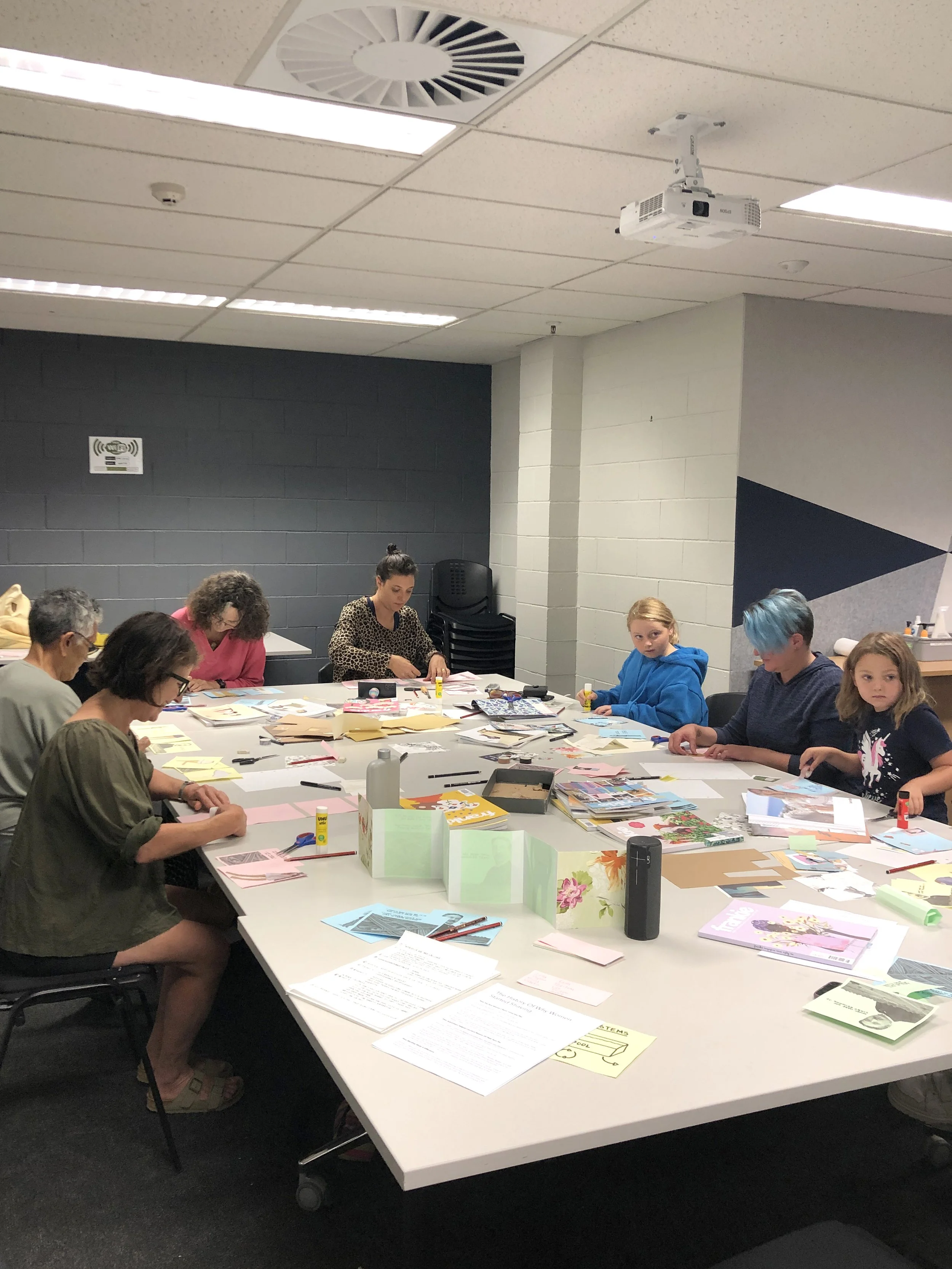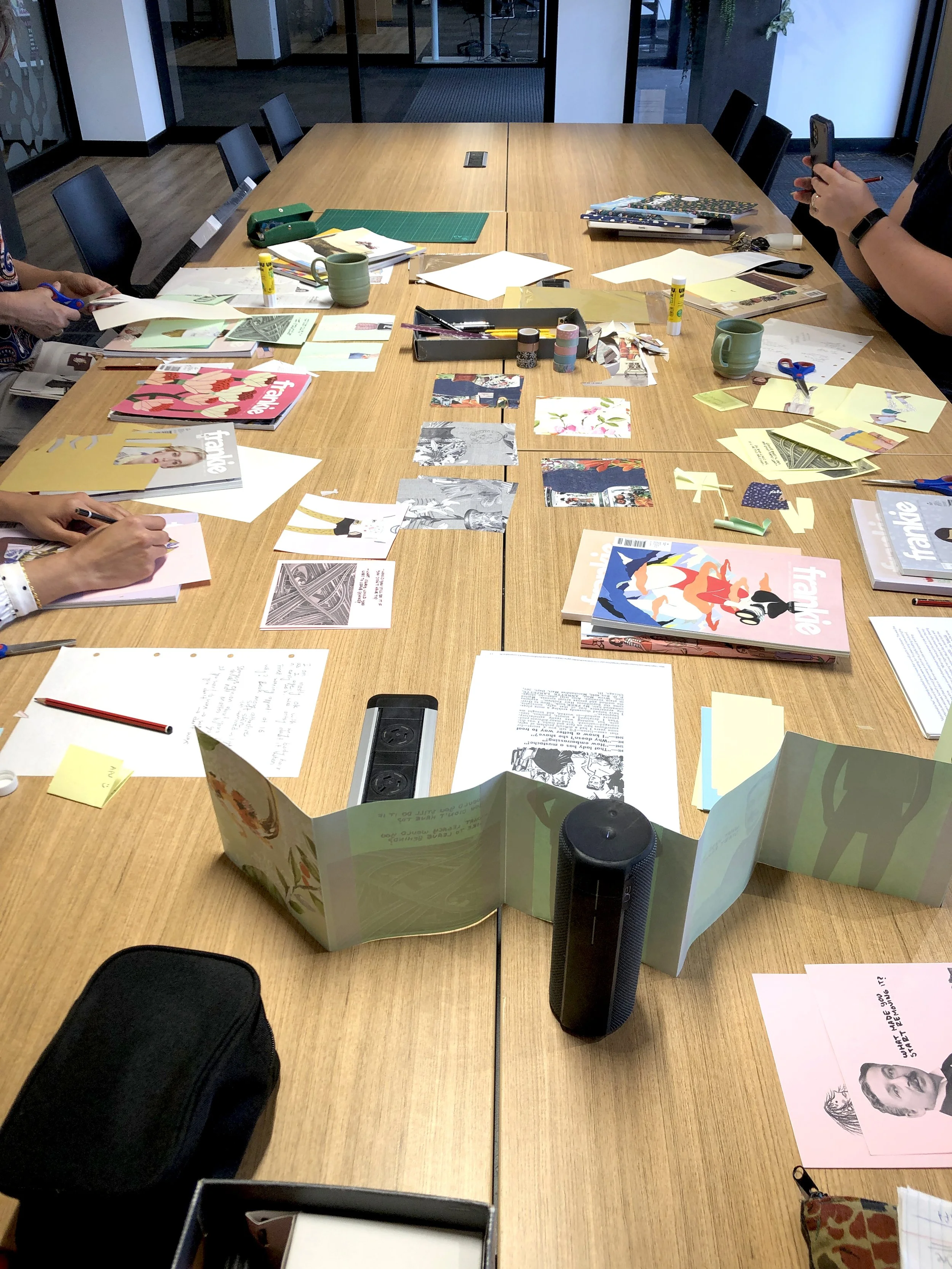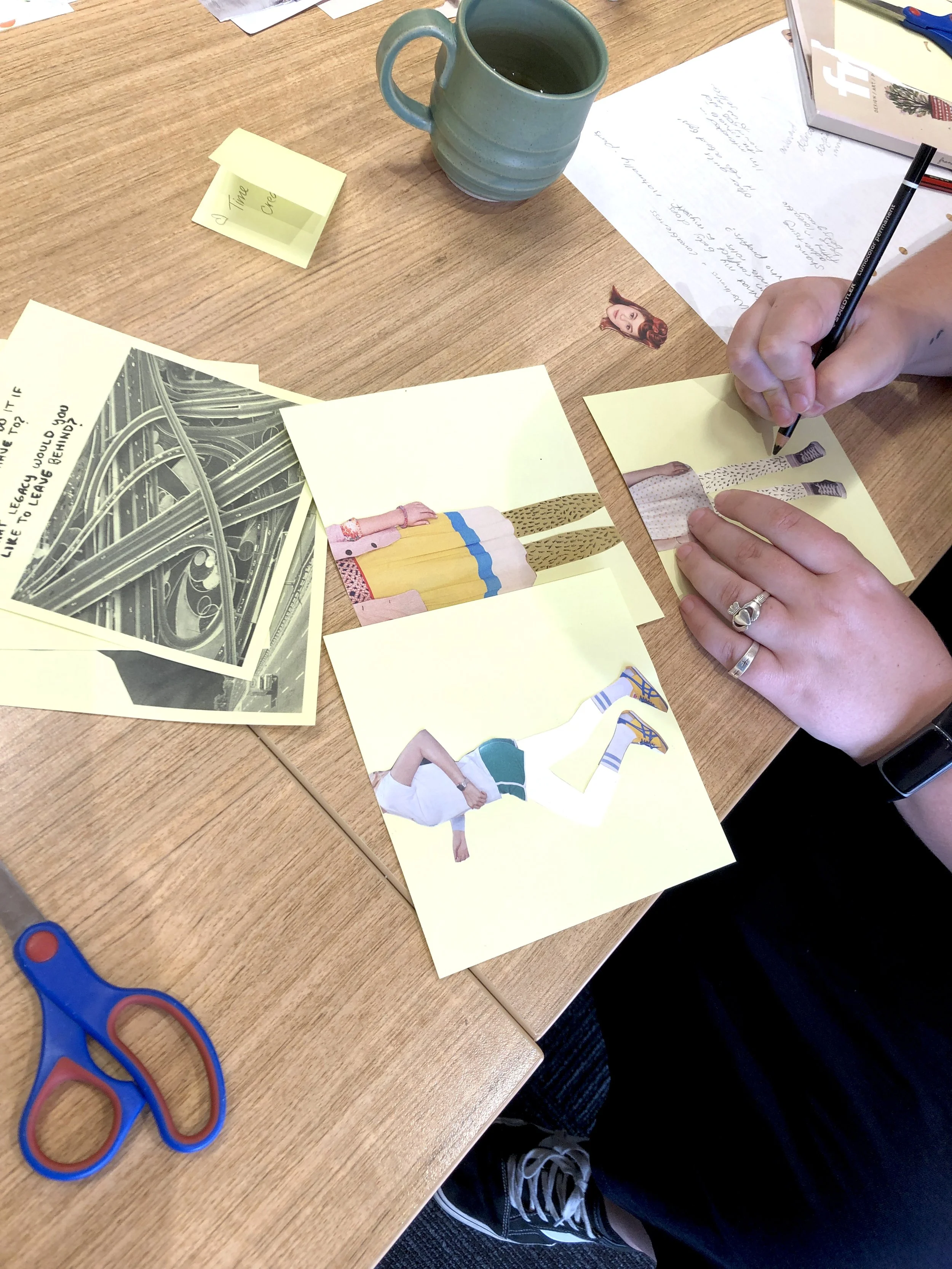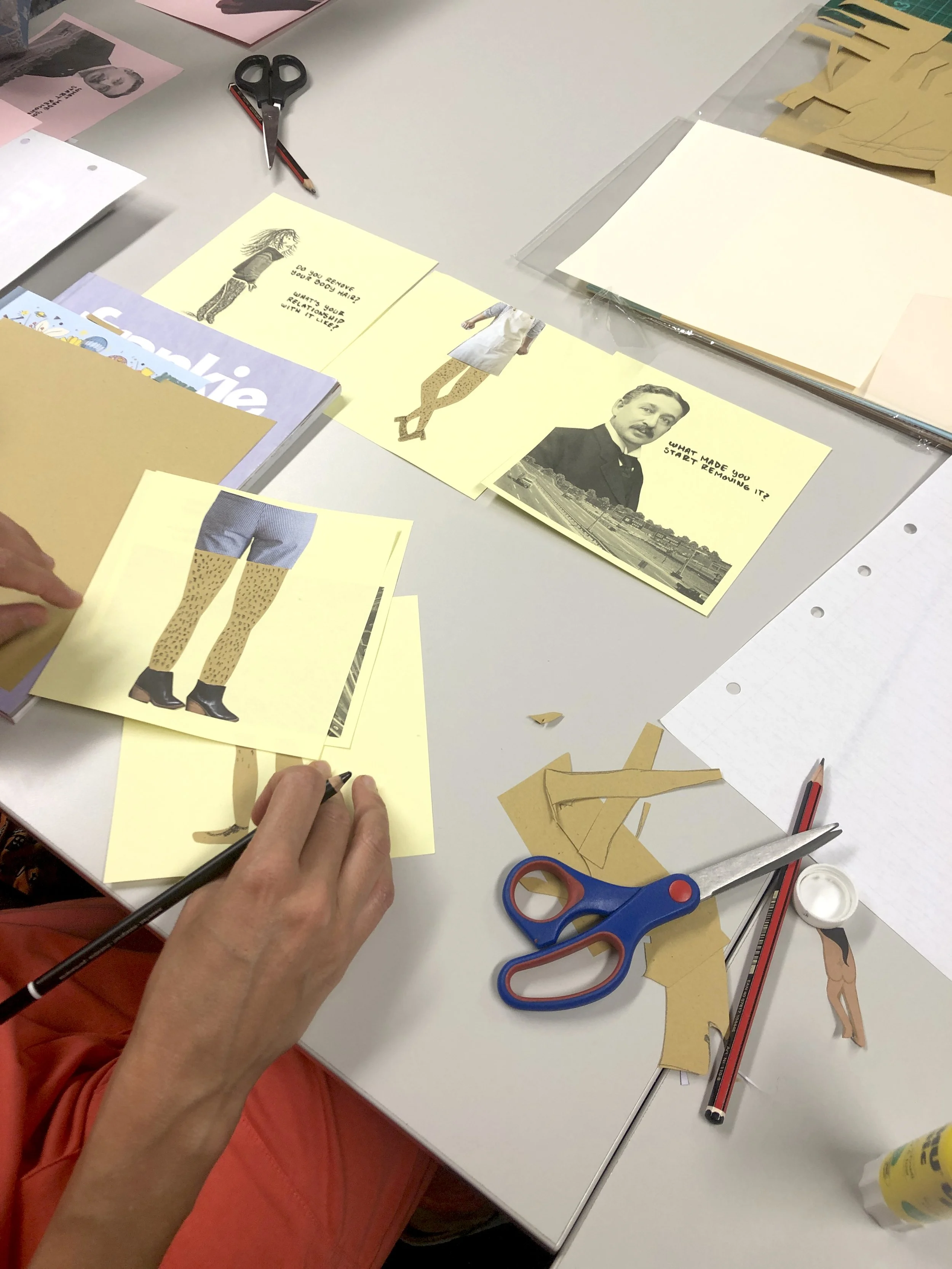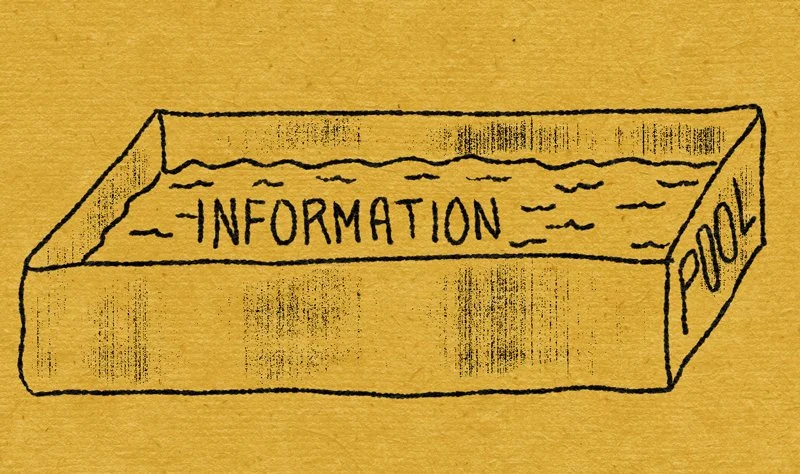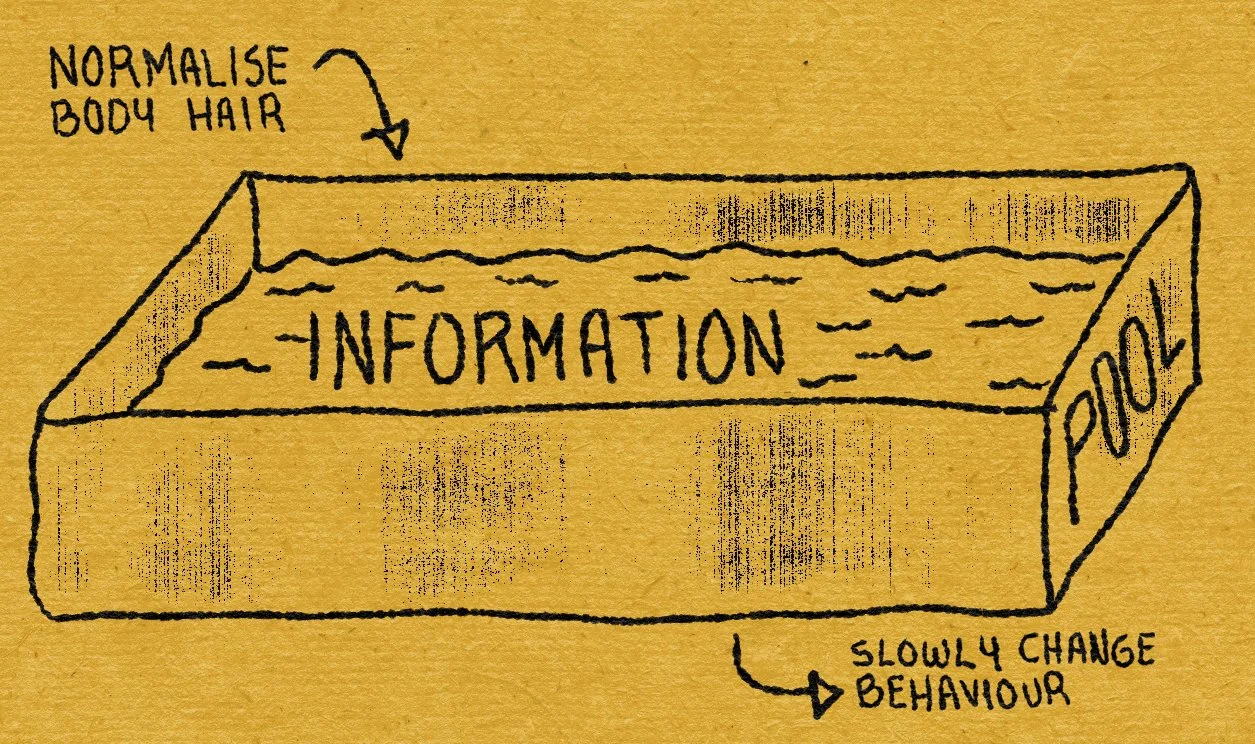Cut & Paste Sessions Vol. 01: Female Body Hair
The Cut & Paste Sessions are born
Cut & Paste are creative conversations about topics relevant to our everyday lives and the world we live in. These sessions are designed to bring people together to make art and crafts while having good yarns. Each session revolves around a particular theme, with the aim of sparking dialogue: Why do things work the way they do? Do we want them to stay that way? What could change? Together, we imagine alternative futures through creative activity.
For the first edition of Cut & Paste, we held three creative sessions at the Hamilton City Library (New Zealand) on the 16th, 17th, and 24th of February 2024. Each session was unique, with different participants joining on each date. Everyone created a series of collages and a zine (a handmade booklet) based on the session’s topic and the conversations we held around it.
Female Body Hair
The topic for this Cut & Paste was female body hair. I chose this theme because, at present, hairless female bodies are considered the norm. Many of us have engaged in body hair removal practices—but how many of us have really questioned where those practices came from? After all, we’re born with hair. So why, and when, did we decide it was a good idea to remove it? These practices are often painful or uncomfortable—so what motivates us? And what happens when women can't be bothered, or simply choose not to comply with the norm? Is there space for non-conforming, hairy female bodies? Are they accepted?
During our sessions, we explored these questions and delved into the history of hair removal practices in the 20th century.
Is It Really Our Choice?
One of the most thought-provoking questions that came up was: Is it really a choice for women to remove their body hair—or not?
We learned that the first body hair removal products for women emerged primarily from a desire to generate profit. But to sell those products, companies like Gillette first needed to create a demand among women. They succeeded through strategic advertising, which played a powerful role in reshaping social norms and attitudes toward female body hair.
Ads used carefully chosen negative language, referring to body hair as “objectionable,” “an embarrassing personal problem,” or “ugly, noticeable, and unwanted.” These narratives shaped collective behavior and reinforced the belief that body hair was undesirable.
Over more than 100 years, a vast pool of information has accumulated—media messages, cultural expectations, product marketing—all telling us what to believe about female body hair. This pool influences how we think, what we buy, and what we feel we must do to be “acceptable.”
The Change We’d Like To See
A shared theme in our discussions was the desire for a more relaxed, accepting attitude toward female body hair. Most of us agreed that we don’t enjoy the pressure to meet strict beauty standards or maintain perfectly smooth bodies. We don’t want to feel ashamed or self-conscious about our (hairy) bodies. And we’d like the freedom to show up—hair and all—without judgment.
What We Can Do to Support That Change
We realized that our behavior around body hair is shaped by what we see, hear, and internalize over time. So, one way to support change is by feeding the pool of information with new, affirming stories and images.
This might look like:
Bringing our hairy bodies into public spaces more often—starting small, increasing over time.
Sharing photos or artwork that represent realistic, hairy female bodies.
Following hashtags like #normalizebodyhair and #projectbodyhair on social media to surround ourselves with different narratives.
Practicing mindfulness in how we speak about our own and others' body hair.
What We Created
Here are some images of the artwork we made during our sessions. These collages and zines reflect our thoughts and experiences on the theme of female body hair. You can watch an example of one of our zines in the video below. This is our small but powerful contribution to the pool of information that normalises body hair on female bodies.
Join The Conversation
You can add to the pool too! Share your own content using the hashtag #femalebodyhair on Instagram.

